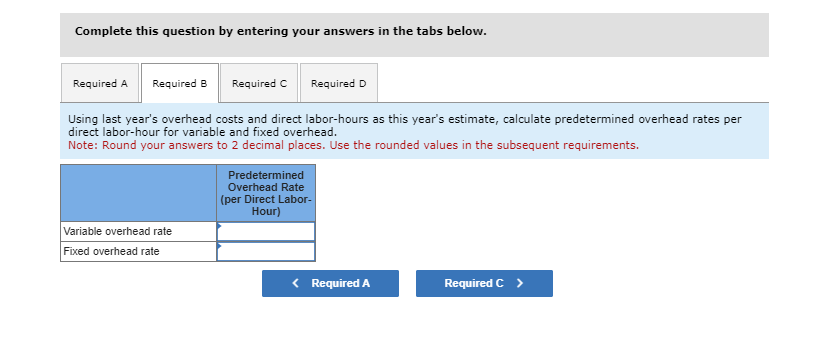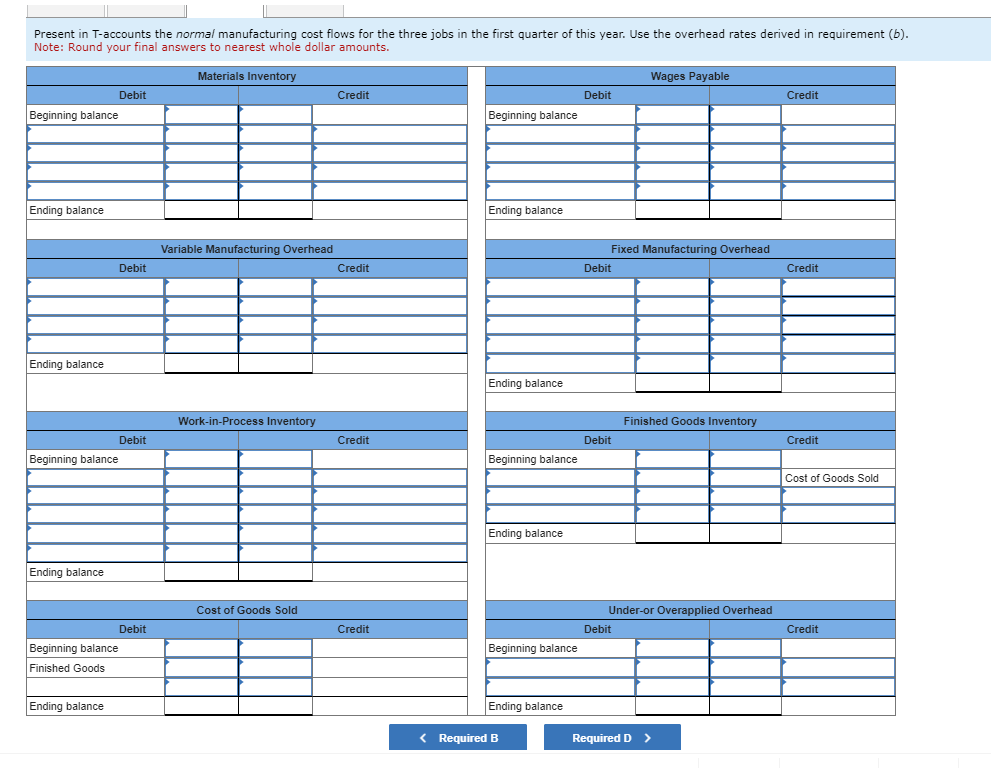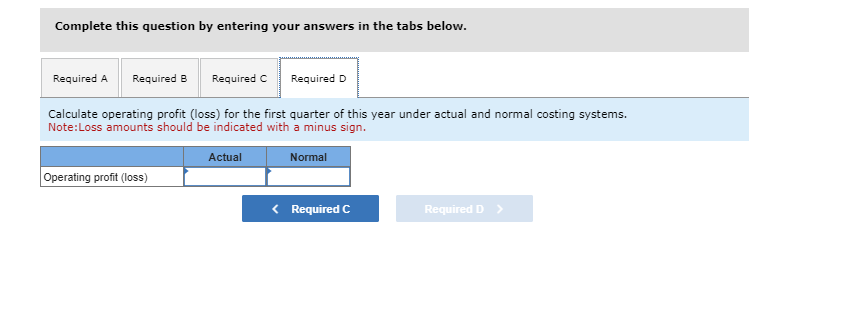Answered step by step
Verified Expert Solution
Question
1 Approved Answer
Hyde Restorations rebuilds factory facilities. It employs 130 full-time workers at $25 per hour. Despite operating at capacity, last year's performance was a great





Hyde Restorations rebuilds factory facilities. It employs 130 full-time workers at $25 per hour. Despite operating at capacity, last year's performance was a great disappointment to the managers. In total, nine jobs were accepted and completed, Incurring the following total costs: Direct materials Direct labor Manufacturing overhead $ 1,215,200 4,525,000 1,158,400 Of the $1,158,400 manufacturing overhead, 25 percent was variable overhead and 75 percent was fixed. This year, Hyde expects to operate at the same activity level as last year, and overhead costs and the wage rate are not expected to change. For the first quarter of this year, Hyde Restorations completed two jobs and was beginning the third (Job 13). The costs Incurred follow: Job 11 Job 12 Job 13 Total manufacturing overhead Direct Materials Direct Labor $ 178,860 121,400 122,700 $ 615,000 393,000 249,500 325,940 157,300 Total marketing and administrative costs You are a consultant associated with Conway & Company, which has been hired by Hyde to analyze the profitability issue. The managing partner on the engagement has reviewed the accounts at Hyde and suggests you start by classifying the overhead into fixed and variable components for each of the jobs. With the help of the Hyde supervisors on each of the jobs, you arrive at the following split. Actual Manufacturing Fixed Overhead Variable $ 36,380 $ 125,300 Job 11 Job 12 Job 13 33,500 6,020 $ 75,900 106,340 20,900 $ 252,540 In the first quarter of this year, 30 percent of marketing and administrative cost was variable and 70 percent was fixed. You are told that Jobs 11 and 12 were sold for $1,100,000 and $700,000, respectively. All over- or underapplied overhead for the quarter is written off to Cost of Goods Sold. Required: a. Present In T-accounts the actual manufacturing cost flows for the three jobs in the first quarter of this year. b. Using last year's overhead costs and direct labor-hours as this year's estimate, calculate predetermined overhead rates per direct labor-hour for variable and fixed overhead. c. Present In T-accounts the normal manufacturing cost flows for the three jobs in the first quarter of this year. Use the overhead rates derived in requirement (b). d. Calculate operating profit (loss) for the first quarter of this year under actual and normal costing systems. 8 Required A Required B Required C Required D Present in T-accounts the actual manufacturing cost flows for the three jobs in the first quarter of this year. 3 points Skipped Debit Beginning balance eBook Print Ending balance Ending balance Materials Inventory Credit Variable Manufacturing Overhead Debit Credit Wages Payable Debit Credit Beginning balance Ending balance Ending balance Fixed Manufacturing Overhead Debit Credit Work-in-Process Inventory Finished Goods Inventory Debit Credit Debit Credit Beginning balance Beginning balance Ending balance Cost of Goods Sold Debit Credit Beginning balance Finished Goods Ending balance Ending balance Cost of Goods Sold Complete this question by entering your answers in the tabs below. Required A Required B Required C Required D Using last year's overhead costs and direct labor-hours as this year's estimate, calculate predetermined overhead rates per direct labor-hour for variable and fixed overhead. Note: Round your answers to 2 decimal places. Use the rounded values in the subsequent requirements. Variable overhead rate Fixed overhead rate Predetermined Overhead Rate (per Direct Labor- Hour) < Required A Required C > Present in T-accounts the normal manufacturing cost flows for the three jobs in the first quarter of this year. Use the overhead rates derived in requirement (b). Note: Round your final answers to nearest whole dollar amounts. Debit Beginning balance Ending balance Ending balance Materials Inventory Credit Variable Manufacturing Overhead Debit Credit Wages Payable Debit Credit Beginning balance Ending balance Ending balance Fixed Manufacturing Overhead Debit Credit Work-in-Process Inventory Finished Goods Inventory Debit Credit Debit Credit Beginning balance Beginning balance Ending balance Ending balance Cost of Goods Sold Cost of Goods Sold Under-or Overapplied Overhead Debit Credit Debit Credit Beginning balance Beginning balance Finished Goods Ending balance Ending balance < Required B Required D > Complete this question by entering your answers in the tabs below. Required A Required B Required C Required D Calculate operating profit (loss) for the first quarter of this year under actual and normal costing systems. Note:Loss amounts should be indicated with a minus sign. Operating profit (loss) Actual Normal < Required C Required D
Step by Step Solution
There are 3 Steps involved in it
Step: 1
To solve the problem we need to break it down into parts a through d Below are the steps to complete each part Part a Present in Taccounts the actual manufacturing cost flows for the three jobs in the ...
Get Instant Access to Expert-Tailored Solutions
See step-by-step solutions with expert insights and AI powered tools for academic success
Step: 2

Step: 3

Ace Your Homework with AI
Get the answers you need in no time with our AI-driven, step-by-step assistance
Get Started


